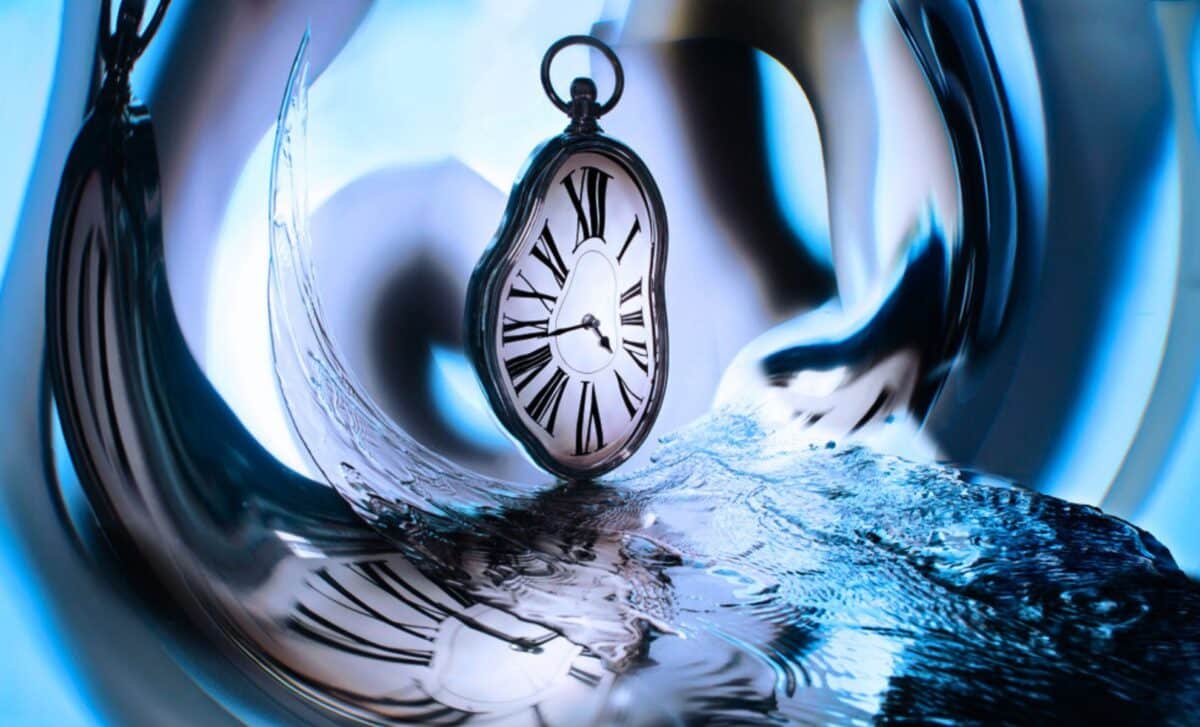Geyer, R. J., Jambeck, J. R. & Law, K. L. Production, use, and fate of all plastics ever made. Sci. Adv. 3, e1700782 (2017).
Google Scholar
Su, Y. et al. Steam disinfection releases micro(nano)plastics from silicone-rubber baby teats as examined by optical photothermal infrared microspectroscopy. Nat. Nanotechnol. 17, 76–85 (2022).
Google Scholar
Mitrano, D. M., Wick, P. & Nowack, B. Placing nanoplastics in the context of global plastic pollution. Nat. Nanotechnol. 16, 491–500 (2021).
Google Scholar
Revell, L. E. et al. Direct radiative effects of airborne microplastics. Nature 598, 462–467 (2021).
Google Scholar
Santos, R. G., Machovsky-Capuska, G. E. & Andrades, R. Plastic ingestion as an evolutionary trap: toward a holistic understanding. Science 373, 56–60 (2021).
Google Scholar
Vethaak, A. D. & Legler, J. Microplastics and human health. Science 371, 672–674 (2021).
Google Scholar
Senathirajah, K. et al. Estimation of the mass of microplastics ingested – A pivotal first step towards human health risk assessment. J. Hazard. Mater. 404, 124004 (2021).
Google Scholar
Zhang, J., Wang, L. & Kannan, K. Polyethylene terephthalate and polycarbonate microplastics in pet food and feces from the United States. Environ. Sci. Technol. 53, 12035–12042 (2019).
Google Scholar
Cohen et al. Emerging applications of stimuli-responsive polymer materials. Nat. Mater. 9, 101–113 (2010).
Zheng, X., Feng, Q. & Guo, L. Quantitative analysis of microplastics and nanoplastics released from disposable PVC infusion tubes. J. Hazard. Mater. 465, 133246 (2024).
Google Scholar
Rawle, D. J. et al. Microplastic consumption induces inflammatory signatures in the colon and prolongs a viral arthritis. Sci. Total Environ. 809, 152212 (2022).
Google Scholar
Shiu, H. T. et al. Dietary exposure to polystyrene nanoplastics impairs fasting-induced lipolysis in adipose tissue from high-fat diet fed mice. J. Hazard. Mater. 440, 129698 (2022).
Google Scholar
Shen, R. et al. Accumulation of polystyrene microplastics induces liver fibrosis by activating cGAS/STING pathway. Environ. Pollut. 300, 118986 (2022).
Google Scholar
Xu, D., Ma, Y., Han, X. & Chen, Y. Systematic toxicity evaluation of polystyrene nanoplastics on mice and molecular mechanism investigation about their internalization into Caco-2 cells. J. Hazard. Mater. 417, 126092 (2021).
Google Scholar
Kwon, W. et al. Microglial phagocytosis of polystyrene microplastics results in immune alteration and apoptosis in vitro and in vivo. Sci. Total Environ. 807, 150817 (2022).
Google Scholar
Zhu, L. et al. Unveiling small-sized plastic particles hidden behind large-sized ones in human excretion and their potential sources. Environ. Sci. Technol. 58, 27 (2024).
Google Scholar
Ragusa, A. et al. Plasticenta: first evidence of microplastics in human placenta. Environ. Int. 146, 106274 (2021).
Google Scholar
Xu, M. et al. Size-dependent in vivo transport of nanoparticles: implications for delivery, targeting, and clearance. ACS Nano 17, 20825–20849 (2023).
Google Scholar
Schur, C. et al. When fluorescence is not a particle: The tissue translocation of microplastics in Daphnia magna seems an artifact. Environ. Toxicol. Chem. 38, 1495–1503 (2019).
Google Scholar
Jani, P., Halbert, G. W., Langridge, J. & Florence, A. T. Nanoparticle uptake by the rat gastrointestinal mucosa: Quantitation and particle size dependency. J. Pharm. Pharmacol. 42, 821–826 (1990).
Google Scholar
Im, C. et al. PET tracing of biodistribution for orally administered (64)Cu-labeled polystyrene in mice. J. Nucl. Med. 63, 461–467 (2022).
Google Scholar
Delaney, S. et al. Unraveling the in vivo fate of inhaled micro- and nanoplastics with PET imaging. Sci. Total Environ. 904, 166320 (2023).
Google Scholar
Luo, Y. et al. Quantitative tracing of uptake and transport of submicrometre plastics in crop plants using lanthanide chelates as a dual-functional tracer. Nat. Nanotechnol. 17, 424–431 (2022).
Google Scholar
Mitrano, D. M. et al. Synthesis of metal-doped nanoplastics and their utility to investigate fate and behaviour in complex environmental systems. Nat. Nanotechnol. 14, 362–368 (2019).
Google Scholar
Al-Sid-Cheikh, M. et al. Uptake, whole-body distribution, and depuration of nanoplastics by the scallop Pecten maximus at environmentally realistic concentrations. Environ. Sci. Technol. 52, 14480–14486 (2018).
Google Scholar
Al-Sid-Cheikh, M. et al. Synthesis of 14C-labelled polystyrene nanoplastics for environmental studies. Commun. Mater. 1, 97 (2020).
Google Scholar
Clark, N. J., Fischer, A. C., Durndell, L., Galloway, T. S. & Thompson, R. C. Translocation of 14C-polystyrene nanoplastics into fish during a very-low concentration dietary exposure. Chemosphere 341, 140058 (2023).
Google Scholar
Shelver, W. L., McGarvey, A. M., Billey, L. O. & Banerjee, A. Fate and disposition of [14C]-polystyrene microplastic after oral administration to laying hens. Sci. Total Environ. 909, 168512 (2024).
Google Scholar
Sarin, H. Physiologic upper limits of pore size of different blood capillary types and another perspective on the dual pore theory of microvascular permeability. J. Angiogenes Res. 2, 14 (2010).
Google Scholar
Oliver, J. et al. Determination of glomerular size-selectivity in the normal rat with Ficoll. J. Am. Soc. Nephrol. 3, 214–228 (1992).
Google Scholar
Wright, S. L. & Kelly, F. J. Plastic and human health: a micro issue? Environ. Sci. Technol. 51, 6634–6647 (2017).
Google Scholar
Prust, M., Meijer, J. & Westerink, R. H. S. The plastic brain: neurotoxicity of micro- and nanoplastics. Part. Fibre Toxicol. 17, 24 (2020).
Google Scholar
Hall, C., Lueshen, E., Mosat, A. & Linninger, A. A. Interspecies scaling in pharmacokinetics: a novel whole-body physiologically based modeling framework to discover drug biodistribution mechanisms in vivo. J. Pharm. Sci. 101, 1221–1241 (2012).
Google Scholar
Marfella, R. et al. Microplastics and nanoplastics in atheromas and cardiovascular events. N. Engl. J. Med. 390, 10 (2024).
Google Scholar
Jani, P. U., McCarthy, D. E. & Florence, A. T. Nanosphere and microsphere uptake via Peyer’s patches: observation of the rate of uptake in the rat after a single oral dose. Int. J. Pharm. 86, 239–246 (1992).
Google Scholar
Jani, P., Halbert, G., Langridge, J. & Florence, L. A. The uptake and translocation of latex nanospheres and microspheres after ora-administration to rats. J. Pharm. Pharmacol. 41, 809–812 (1989).
Google Scholar
Smyth, S. H., Feldhaus, S., Schumacher, U. & Carr, K. E. Uptake of inert microparticles in normal and immune deficient mice. Int. J. Pharm. 346, 109–118 (2008).
Google Scholar
Mohammad, A. K., Amayreh, L. K., Mazzara, J. M. & Reineke, J. J. Rapid lymph accumulation of polystyrene nanoparticles following pulmonary administration. Pharm. Res. 30, 424–434 (2013).
Google Scholar
Zhao, Y. et al. Factors influencing the blood-brain barrier permeability. Brain Res. 1788, 147937 (2022).
Google Scholar
Wu, D. et al. The blood-brain barrier: structure, regulation, and drug delivery. Signal Transduct. Target. Ther. 8, 217 (2023).
Google Scholar
Kreuter, J. et al. Apolipoprotein-mediated transport of nanoparticle-bound drugs across the blood-brain barrier. J. Drug Target. 10, 317–325 (2002).
Google Scholar
Gu, X. et al. Clearance of two organic nanoparticles from the brain via the paravascular pathway. J. Control Release 322, 31–41 (2020).
Google Scholar
Grafmueller, S. et al. Bidirectional transfer study of polystyrene nanoparticles across the placental barrier in an ex vivo human placental perfusion model. Environ. Health Perspect. 123, 1280–1286 (2015).
Google Scholar
Wellnitz, O. & Bruckmaier, R. M. Invited review: The role of the blood-milk barrier and its manipulation for the efficacy of the mammary immune response and milk production. J. Dairy Sci. 104, 6376–6388 (2021).
Google Scholar
Chen, C. Y. & Lin, Z. Exploring the potential and challenges of developing physiologically-based toxicokinetic models to support human health risk assessment of microplastic and nanoplastic particles. Environ. Int. 186, 108617 (2024).
Google Scholar
Chen, C. Y., Kamineni, V. N. & Lin, Z. A physiologically based toxicokinetic model for microplastics and nanoplastics in mice after oral exposure and its implications for human dietary exposure assessment. J. Hazard. Mater. 480, 135922 (2024).
Google Scholar
Keinänen, O. et al. Harnessing PET to track micro- and nanoplastics in vivo. Sci. Rep. 11, 11463 (2021).
Google Scholar
Liu, C. et al. Widespread distribution of PET and PC microplastics in dust in urban China and their estimated human exposure. Environ. Int. 128, 116–124 (2019).
Google Scholar
Tian, J. et al. Absorption, distribution, metabolism, and excretion of [14C]NBP (3-n-butylphthalide) in rats. J. Chromatogr. B 1181, 122915 (2021).
Google Scholar
Russell, J. A. Milk yield, suckling behaviour and milk ejection in the lactating rat nursing litters of different sizes. J. Physiol. 303, 403–415 (1980).
Google Scholar
Gage, G. J., Kipke, D. R. & Shain, W. Whole animal perfusion fixation for rodents. J. Vis. Exp. 30, 3564 (2012).
Google Scholar
Wang, M. et al. Stimulated Raman scattering microscopy reveals bioaccumulation of small microplastics in protozoa from natural waters. Environ. Sci. Technol. 58, 2922–2930 (2024).
Google Scholar



